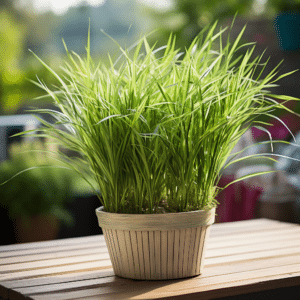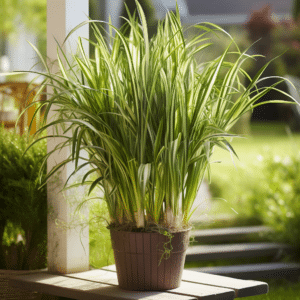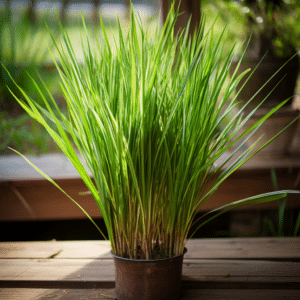Delving into the world of plants, one cannot overlook the remarkable lemon grass plant. Known for its culinary and medicinal uses, this tropical plant has a lot more to offer. Let’s explore the fascinating aspects of this versatile plant.
The Origin and Description of Lemon Grass

The lemon grass plant, scientifically known as Cymbopogon citratus, is native to the tropical regions of Asia, particularly India, Sri Lanka, and Thailand. It is a perennial plant that thrives in warm, humid climates and is now grown in various parts of the world.
Characterized by its long, slender, green leaves, the lemon grass plant can grow up to 1.5 meters in height. It has a unique citrusy aroma, which is where it gets its name. The plant’s stalks are used in cooking, while the leaves are often used for teas and essential oils.
Types of Lemon Grass
There are over 50 species of lemon grass, each with its unique characteristics. The most common types include Cymbopogon citratus, which is used in cooking and as a medicinal herb, and Cymbopogon flexuosus, which is used for its essential oil.
Other types of lemon grass include Cymbopogon nardus, known for its use in insect repellents, and Cymbopogon martinii, which is used in perfumery and aromatherapy.
Cultivating Lemon Grass
Lemon grass is a low-maintenance plant that can be grown in your backyard or in pots. It prefers full sun and well-drained soil. The plant can be propagated from seeds, but it is more commonly grown from stalks purchased at a garden center or grocery store.
To plant lemon grass, simply place the stalks in a glass of water until roots develop. Then, plant the stalks in a pot or directly in the ground. The plant will start to grow new shoots within a week or two.
Caring for Lemon Grass

Lemon grass requires regular watering, especially during dry periods. However, it is important not to overwater the plant as this can lead to root rot. The plant also benefits from regular pruning to promote new growth and to keep it from becoming too tall.
While lemon grass is generally pest-resistant, it can sometimes be affected by spider mites or leaf blight. Regular inspection of the plant and prompt treatment can help keep these issues at bay.
Uses of Lemon Grass
Lemon grass is a versatile plant with a wide range of uses. Its stalks are commonly used in Asian cuisine, particularly in soups, curries, and stir-fries. The plant’s leaves can be used to make a refreshing tea, which is known for its health benefits.
Beyond its culinary uses, lemon grass is also valued for its medicinal properties. It has been used in traditional medicine for its analgesic, anti-inflammatory, and anti-fungal properties. The essential oil extracted from lemon grass is used in aromatherapy and can help relieve stress and anxiety.
Lemon Grass in the Kitchen
In the kitchen, lemon grass adds a unique flavor to dishes. It can be used fresh, dried, or powdered. When using fresh lemon grass, the outer leaves and the lower bulb are usually removed, and the tender part of the stalk is finely chopped or crushed.
Lemon grass pairs well with coconut milk, chicken, seafood, and spices like coriander and chili. It is a key ingredient in many Asian dishes, including the famous Thai soup Tom Yum.
Lemon Grass as a Medicinal Herb
In traditional medicine, lemon grass has been used to treat a variety of conditions. It is believed to help with digestive problems, reduce fever, and relieve pain. Recent studies have also suggested that lemon grass may have anti-cancer properties.
The essential oil of lemon grass is used in aromatherapy to help reduce stress, anxiety, and depression. It is also used topically to treat fungal infections and inflammation.
Conclusion
The lemon grass plant is truly a wonder of nature. From its culinary uses to its medicinal properties, this tropical plant has a lot to offer. Whether you’re a gardener, a chef, or simply a plant enthusiast, the lemon grass plant is a worthy addition to your collection.
